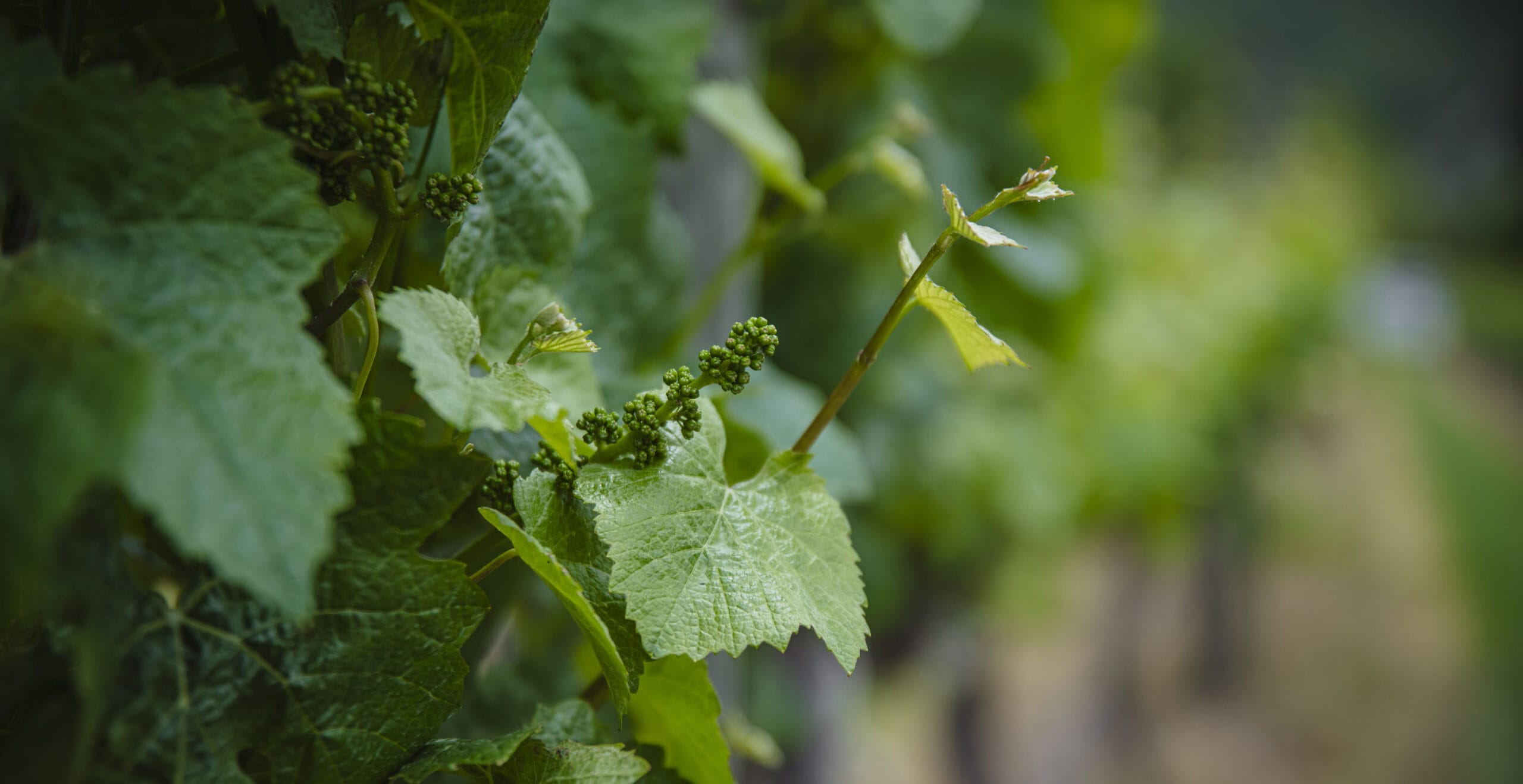There has been growing interest in disease resistant varieties (DRVs) because of their potential to help the wine industry reach its sustainability targets. This FAQ aims to answer some common questions about them.
What are disease resistant varieties?
Disease resistant varieties refer to selections of plants that have been developed to be resistant to certain diseases. This resistance can be natural or developed through breeding practices, genetic modification, or other agricultural biotechnologies. Disease resistant varieties can reduce the dependence on fungicides and pesticides, leading to more sustainable grape growing.
Are DRVs the same thing as PIWI?
Disease resistant grapevines go by several different terms. The term of choice in New Zealand has been DRVs. In Germany, which grows the largest proportion of disease resistant varieties, they use the term PIWI which stands for ‘fungus resistant’ or pilz widerstand in German.
What are the benefits of DRVs?
Grapes are susceptible to a wide range of diseases such as powdery mildew, downy mildew and botrytis which are usually controlled with the use of chemical fungicides and cultural control methods. The development of DRVs is a response to the need to reduce spray applications, leading to more environmentally friendly grape growing.
DRVs could have the benefit of reducing the reliance on chemical management, therefore the costs associated such as the cost of chemical sprays, the labour for applying treatments, use of diesel, and potential yield losses.
With the changing climate we may see warmer, wetter conditions, so there’s an increased risk of disease outbreaks in vineyards. DRVs offer a proactive approach to mitigate these risks.
How are they created?
Disease resistant varieties have been developed in France, Germany, Italy, the USA, and Australia. Some of these programmes have been underway for decades, for example, INRAE in France, and they have all taken a similar approach to creating DRVs.
Plant breeders test native wild grapevines until they find native varieties that have evolved natural resistance. These vines have one or more genes that enable them to be resistant to infection by the pathogen. These native grapevines are typically a different species from the one that’s used to grow wine grapes (Vitis vinifera).
They then cross the resistant species with an elite commercial variety creating a hybrid that shares 50% of the genetics of each parent. These offspring are crossed back with a commercial variety again so in the second generation 75% of their genes will be from a commercial variety and 25% from the wild parent. After several generations, vines are grown whose genes almost exclusively come from commercial varieties. This typically takes around 25 years for grapevines because of how long each generation takes to grow from seed to maturity and the time it takes to select vines for every crossing.
At each stage, offspring that have the best commercial traits as well as the disease resistant gene are selected. Historically this would have been done by testing for these traits in the field when the plants are mature, but these days it is sped up with DNA testing. This is called marker-assisted selection (MAS) because it uses DNA markers to help with selecting which plants to use.
Why does the traditional method take so long?
One reason that it takes so long is that when you plant out the seed from any cross you must wait several years before you can screen the plants and then pollinate flowers and collect new seeds from them. For grapevines, it is typically three to four years, so to produce seven generations it can take multiple decades.
The risk in traditional breeding systems is you cannot pivot to a different desired trait during the process, you would need to start the breeding programme again to select another trait.
Do DRVs taste good?
As the development of DRVs has been underway for many years, there are new disease resistant varieties available in international markets to try. The early disease resistant varieties had fewer generations of crossing and so in many cases, they didn’t produce quality wine, which generated a bad reputation for hybrid grape varieties.
Some of the DRVs that have been released recently have benefited from many rounds of selection, often supported by DNA markers, and are being used to make high-quality wine.
Why aren’t more people commercialising them?
Wine variety is an important signal of what’s in the bottle for consumers – in New Zealand, it’s the primary signal. Therefore, it’s a big risk for growers to make and sell wine from an unknown variety.
In many places, the appellation name is a stronger signal of quality. Some of these places have been able to change the appellation definition to include some DRVs, allowing growers to still put the appellation name on the bottle. In 2021, the EU allowed hybrid varieties to be used for producing protected denominations of origin (PDO) wines. Since then the appellation definitions for Champagne and Bordeaux have been changed to allow some DRVs to be grown and utilised in these wines.
In other places, there are rules about how much wine from an alternative varietal can go into the bottle without having to appear on the label, such as in New Zealand where it’s 15%. In countries where DRVs are available, growers can blend new DRVs in a minority portion into the wine.
In Germany, where there has been the most organised campaign to promote the uptake of PIWI, they still make up less than 5% of the commercial vineyard plantings. However, EU legislation requires a 50% reduction in agrichemical application by 2030, and DRVs are seen as one of the only ways to achieve that goal.
Are DRVs genetic engineering?
Current DRVs have been developed with traditional breeding. Researchers around the world are exploring the use of modern biotechnologies, like CRISPR, to engineer resistant varieties more rapidly, but none of these are ready for field testing yet. Depending on what techniques are used, and where the experiments are conducted, the resulting plants may or may not be considered GMOs.
DRVs sound great, can we make a disease resistant Sauvignon blanc?
The varietal names we use, like Sauvignon blanc, refer to genetic types that originate from a single seed and are propagated by cuttings. As soon as you germinate a new plant from a seed, it is a new variety. Therefore, you can’t make a DRV Sauvignon blanc. However, some DRVs have Sauvignon blanc in their parentage. Often, DRVs are given names that sound similar to well-known varieties.
How are DRVs different to the Sauvignon Blanc Grapevine Improvement Programme?
DRVs are hybrids of contemporary and disease resistant varieties. Guided by industry priorities, the Sauvignon Blanc Grapevine Improvement Programme is developing new clones of our primary variety, Sauvignon blanc.
Are there any DRVs in New Zealand?
Two examples we do have in the National Vine Collection are Regent and Plantet. These are early German and French interspecifics bred prior to 1970. Both are cool-climate red-grape varieties, with less than 2 ha of Plantet grown commercially in NZ.
There are no native grapevines in NZ and historically no breeding programme has existed. Several organisations, including Bragato Research Institute, Plant & Food Research and Riversun, have been working on ways to import resistant hybrids or start breeding using seed from European DRVs.
What is Bragato Research Institute’s stance on DRVs?
BRI’s Grapevine Improvement team is working to keep up with gains being made overseas, new DRVs and biotechnology through established collaborations with international experts in these fields.
The team believes it is important that New Zealand has access both to the resistance genes for local grapevine improvement work, and hopes to access DRVs that have already been bred so they can test the performance of these traits under local conditions and their potential for assisting our wine industry with its sustainability goals.
What is the future of DRVs?
Until recently, DRVs have seen limited uptake because of the problem of marketability. Led by Europe’s ambitious policies limiting the application of sprays post-2030 and changing consumer preferences and demographics, this may change in the coming years.

















